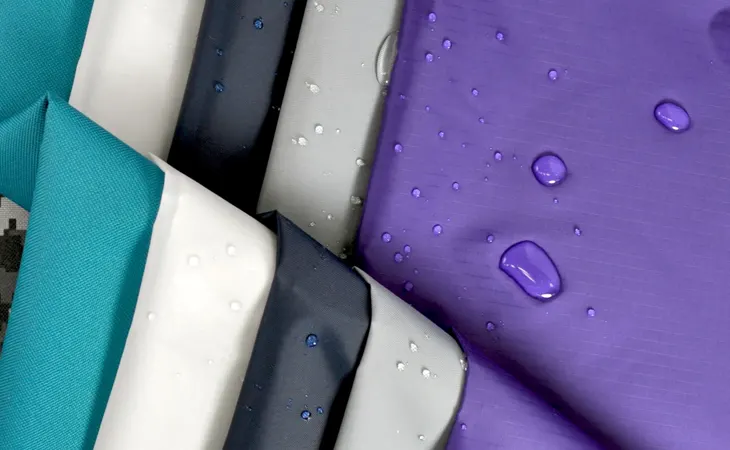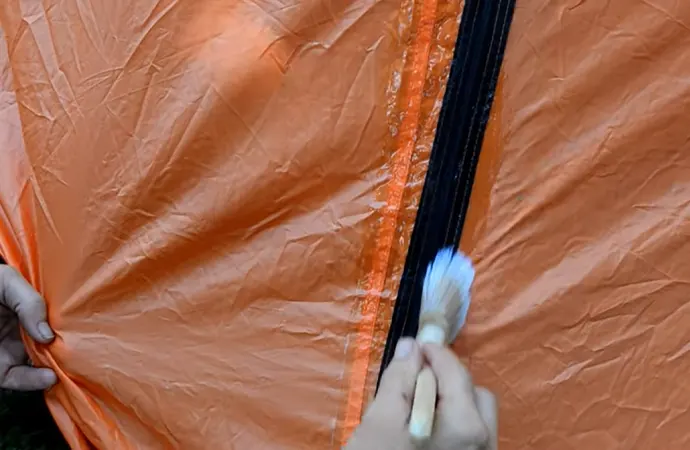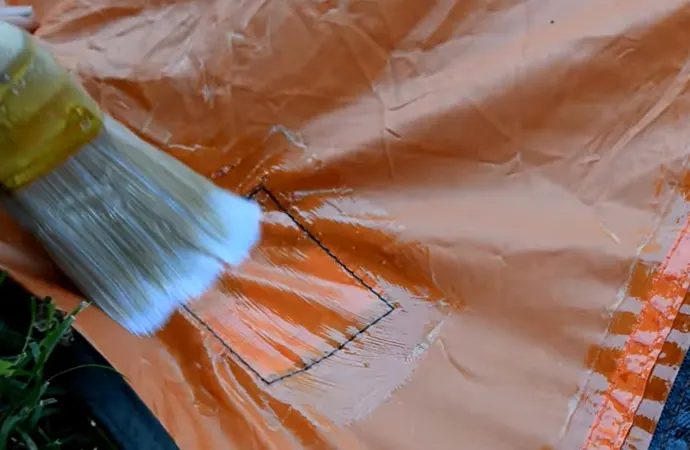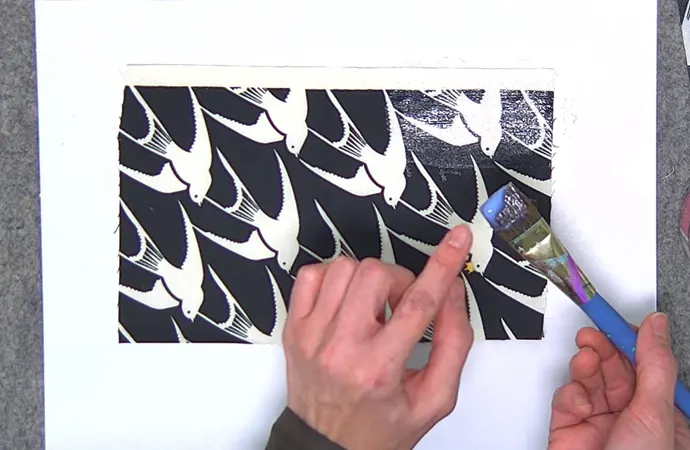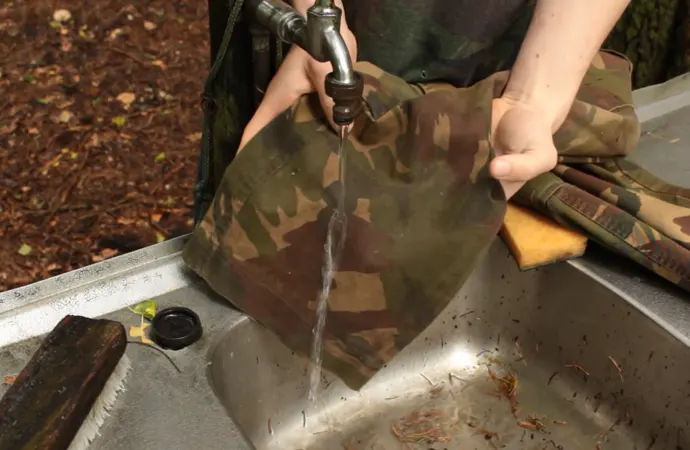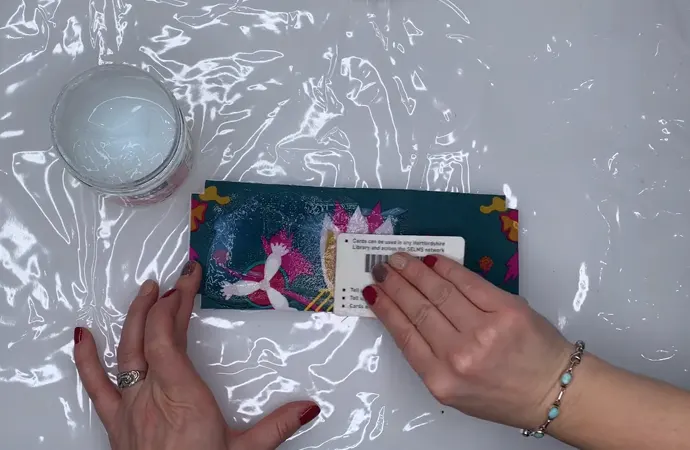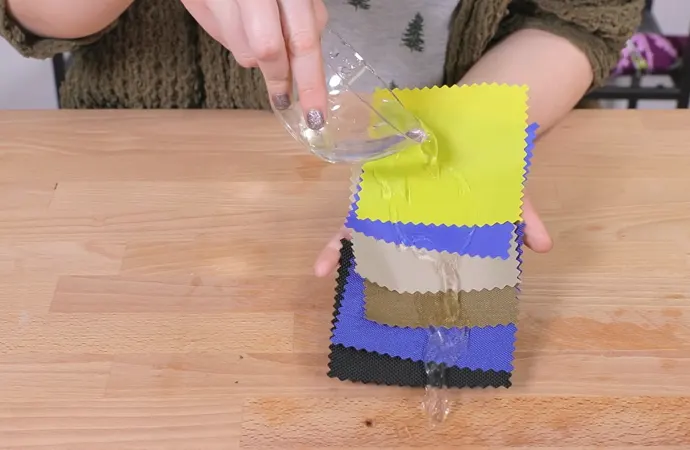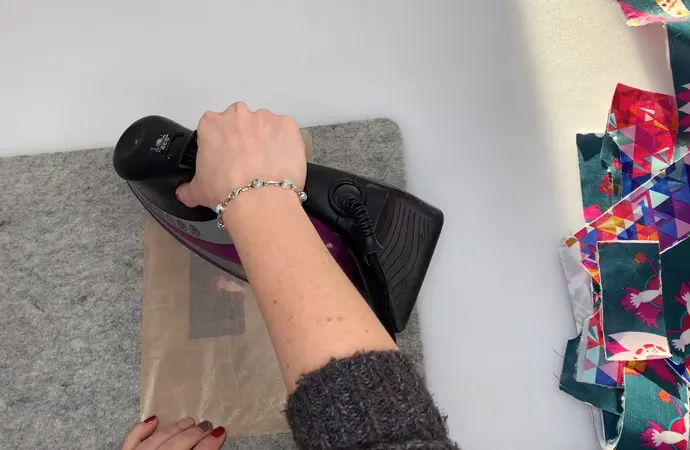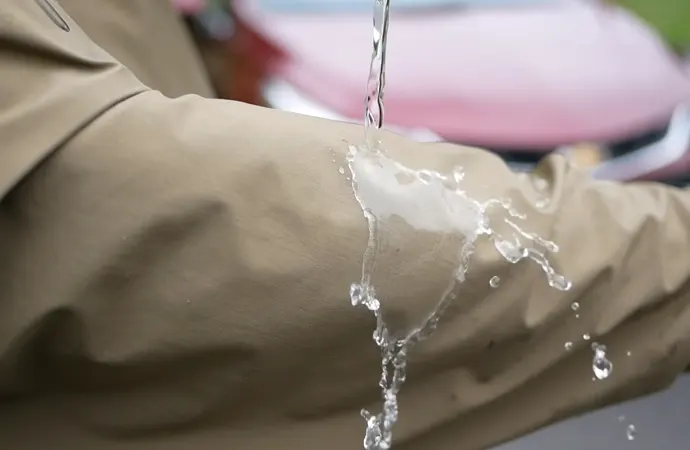How to Make Fabric Waterproof? Explained 5 Easy Methods
One of the most uncomfortable matters of unexpected rain is wet clothes. Also, unanticipated rain soaks up the outdoor cushions and pillows, which is an even bigger headache. But we don’t know “how to make fabric waterproof at home”.
Furthermore, if you have a child in the house, you see them spilling and staining liquids on cushions, pillows, bar stools almost every single day.
So, you will find a lot of reasons for waterproofing various fabrics, which will make your everyday life much easier.
Let’s Start How to Make Fabric Waterproof
Waterproofing fabric is fairly easy. However, there are a number of methods to follow regarding the issue. Let us take a look at some of the easiest options to waterproof fabrics at home.
1. Spraying and Seaming the Seal Method
Things you will need:
- Safety goggles and gloves.
- Waterproofing spray and seam sealer.
This method works great on canvas and nylons fabrics. Spraying a waterproof solution and applying sealer makes fabrics waterproof. If you are outside in a windy situation, the solution will get some amount of dust in the fabric.
Clean your fabric to make it waterproof
At first, you need to clean whatever fabric you want to make waterproof. You can use a brush or a vacuum to clean dust and soil particles if the fabric is non washable. But if your fabric has a lot of soil, and it seems heavy, consider using specially-formulated cleaner.
[tcb-script async=”” src=”//z-na.amazon-adsystem.com/widgets/onejs?MarketPlace=US&adInstanceId=943d6dd5-a420-4426-af55-179e64f90e7e”][/tcb-script]
For the sprays and sealers to work properly, the fabric needs to be completely dry. The solutions don’t stick to wet and damp fabrics.
As both the spray and sealer is pungent, it’s compulsory to use gloves if you have skin sensitivity or allergies; wear safety goggles as well.
Make sure your room has proper ventilation
If you work outside, It would be better. But if you cannot, then open windows and make sure the room has proper ventilation. You can purchase waterproofing spray and sealer from any camping supply store. If you use the fabric outside in the sun, be sure to get a spray with UV protection to prevent the fabric from fading.
Now, take the can and spray at the fabric from a distance of 8 inches. Then apply very light and even layer of sealer. Slightly overlapping the strokes will bring better results.
Wait until the spray is completely dry.
It will take roughly 4 hours to dry, depending on the brand. When the fabric is dry, Apply another coat of the spray. Then apply the sealer over all the seams. Be sure to gently squeeze the sealer bottle to make the seams more durable, which will minimize the chances for water getting inside. This method will also work on cushion, pillow, bar stools, outdoor chairs.
Only apply the waterproofing spray onto these fabrics. The waterproof can hold up for a few months without any issue.
Types of waterproofing spray
You will find various types of waterproofing fabric spray in the market. Some are good at protecting the fabric from food spilling, and stains, while others do an excellent job when it comes to unexpected rains and water splashes.
Some sprays also come with ultraviolet protection as well. Depending on your requirement, wisely choose the solution for your fabric.
Also Know:How To Use Die Cutting Machine Properly?
2. Laundry Detergent and Aluminum
Things you will require:
- 450 g of laundry detergent.
- 250 g alum.
- 7.5 L of hot water.
This method also requires you to wash the fabric you want to make waterproof. Use a brush or vacuum if the dirt and soil are hard to clean. You can use formulated cleaner if vacuuming doesn’t work for you.
It’s time to take the work.
Now, take a large container and fill it with 2 gallons (7.5 L) of hot water. Add 450 g of laundry detergent powder and mix them properly. The container should have enough room for all of your fabrics to submerge in the mixture. Bring the fabrics you want to waterproof and submerge them in the mixture.
The fabrics need to soak until it’s saturated completely. If you see any part of the fabric floating, weigh the part down using a bottle or jar. You need to air-dry the fabric in the sun. Clip the top parts of the fabric to a hanger and avoid folding it.
What to do when your fabric is too larger?
If your fabric is too larger for the hanger, Consider stretching a piece of string between trees or poles and then clip the fabric to it. Make sure the fabric is hanging in a single layer freely.
Take another container and fill it with 7.5 L of hot water. This time, add 250 g alum with the water and mix them.
Stir the mixture to dissolve the alum completely. Soak your fabrics in this solution for about 2 hours. The fabrics need to submerge properly.
Weigh the fabric down if you see any part of it floating. When you are done, hang the fabric outside to air dry completely in the sun. Use clips or string to do so.
Also Read:Tailoring Business Guideline From Expert
3. Using Wax
Rubbing wax to make fabrics waterproof is the oldest method practiced by people of the earlier century. The technique works great on bags and canvas shoes. You will only require a bar of natural beeswax.
Before starting the procedure, you need to wash the fabric. Make sure you purchase pure beeswax that doesn’t include any additives.
Make the cloth and wax a bit warm
At first, Make both the cloth and wax a bit warm. You can do so by using a hairdryer and blow the cloth and wax. Leave them outside during a hot sunny day for 3 to 5 minutes. A warm surface makes it easy to apply the wax. But it shouldn’t be too hot, or it will melt the wax.
Now, take the beeswax and rub it across the fabric. Give it a good rubbing from up-and-down and side-to-side so that the wax can seep into the weave of the cloth.
If you are waterproofing a bag or shoes, be sure to use beeswax’s corners to get into areas that are difficult to reach.
What to do for getting the best result?
For best results, Gently rub the beeswax into tight areas, corners, seams, and pockets. If the fabric has buttons, be sure to wipe the wax over it. Again, take the hairdryer and throw hot air for about five minutes. It will melt the wax into the cloth and make it a little darker.
If you find any puddles or pools of wax, smooth the area by running your finger across it. You can try in a circular motion to make it even smoother and get a nice finish. Leave your fabric in a warm and dry place for about 24 hours.
When you find the fabric to be ready?
After that, You will find the fabric to be ready for use. The fabric might get a bit stiffer and darker than usual. But it’s completely OK. It will soften over time while holding the dark effect.
4. Iron-On Vinyl
If you don’t want to change the color of the fabric while making it waterproof, you can try this method. This method works best on lunch bags and baby bibs. This method will require iron-on vinyl. You will find it in any fabric store.
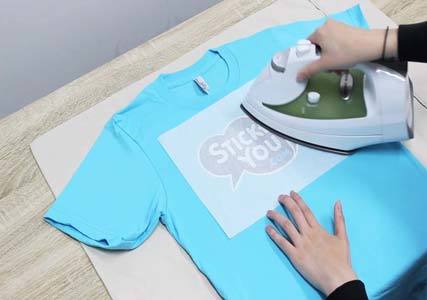

Clean and wash the fabric if it’s necessary. Before starting the procedures, make sure the fabric is completely dry. Put your fabric on a flat surface, and it will be more convenient to work. Make the fabric as smooth as possible. Iron it if there is any need.
Make the vinyl as your fabric
Cut the vinyl according to your fabric and make it fit properly. Furthermore, cut a few more pieces so that you can overlap them if the vinyl isn’t wide enough.
Overlap around the edges by ¼ inch if you need to. Both the paper and vinyl has two sides. Paper has a dull and shiny side, while the vinyl has a smooth and sticky side.
What is the next?
Now, peel off the paper and stick the sticky side of the vinyl onto the fabric. Place the paper back onto the vinyl. The shiny side should face downwards. Now, iron the fabric with minimum heat, the paperback will protect the vinyl from melting.
Don’t leave the iron in one spot for too long. When you are done with the ironing part, the vinyl should have already melted the glue to and fused it to the fabric.
5. Turpentine and Soybean Oil
You will require:
- 1 cup of soybean oil.
- 4 ounces of turpentine.
- Paintbrush.
I know, it already sounds weird, but you can actually make your fabrics waterproof by following this method. But it will also darken the fabric like the beeswax method. Make sure the fabric is adequately washed and dried.
As this method includes the usage of oils and waxes, the solutions will not stick to it if the fabric is dry.
You should apply this method outside
If possible, Try to apply this method outside or at least in a well-ventilated place or room. Take a plastic container and pour 1 cup of soybean oil and 4 ounces of turpentine, then make a mixture with a wooden paint stirrer. You need to paint this mixture onto the fabric using a paintbrush.
Make sure you get a flat bristle brush and avoid a soft bristle one. Now, dip the wide bristle paintbrush into the container and wipe off excess mixture on the rim of the container.
You should give it long and straight strokes
Gently brush onto the fabric, Give it long and straight strokes. Be sure to brush in the same direction and overlap the strokes a bit. However, if you want to waterproof a small piece of fabric, then there is no need for any container.
Pour soybean oil and turpentine into a spray bottle and shake to mix them properly. After that, directly spray on the fabric.
What to do when you’re done.
When you are done, You need to let the fabric completely dry before using it. To prevent stains, lay a plastic tablecloth or anything similar to it on a flat surface, and then lay the fabric on it.
Drying can take anywhere from 4 to 5 hours to a few days depending on the humidity level of the area.
Final Words
Methods that include oily substances may darken your fabric. So, before attempting any method, be sure to test it on a smaller piece of cloth. If you use any sprays, read the instructions thoroughly before applying onto the fabric.
When you are done, test by spilling water on the fabric. If the fabric isn’t waterproof enough after the first attempt, try applying the method for a second time.
After applying any of the methods above, it’s a must to let the fabric completely dry in the sun for getting the best result.
